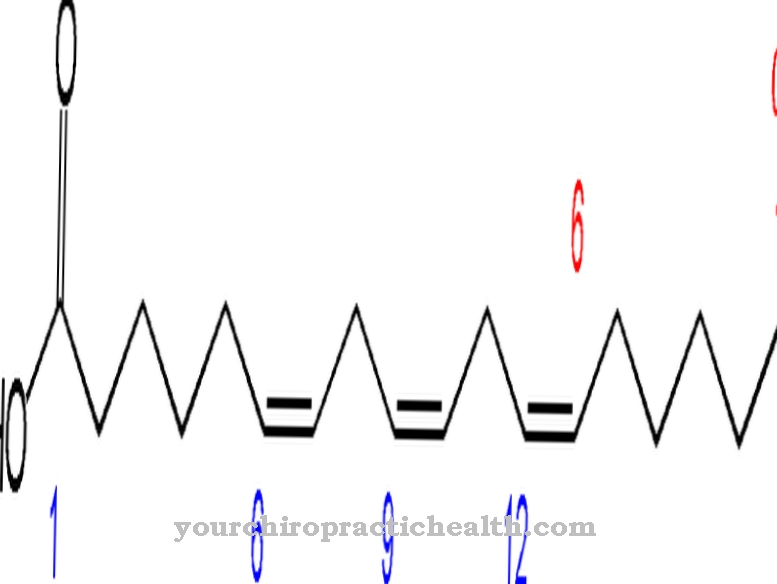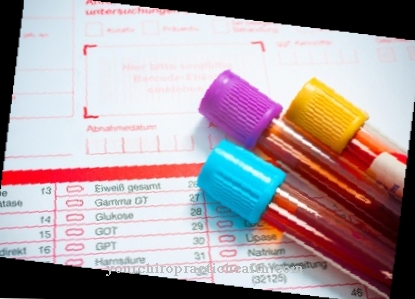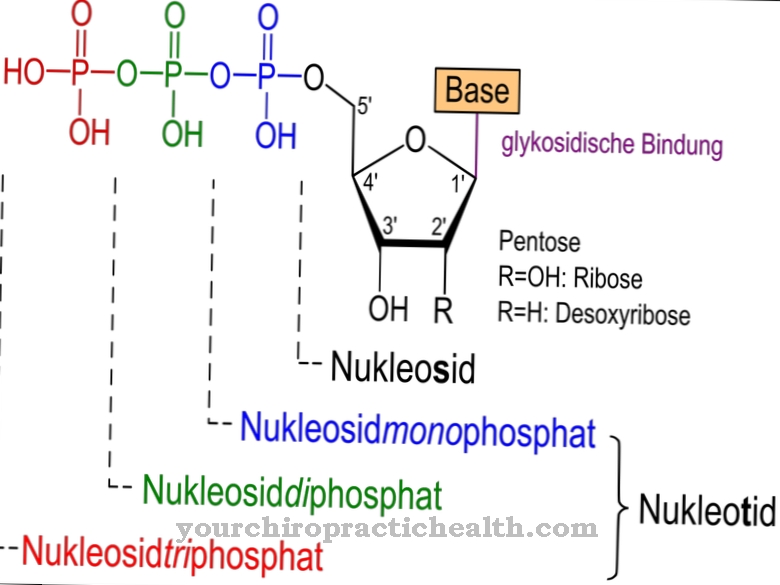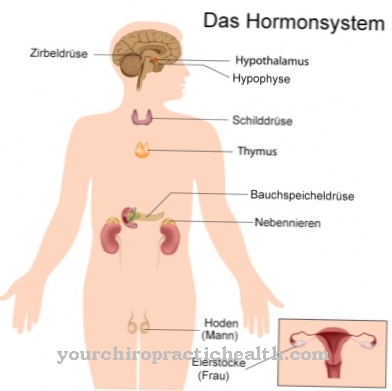The Sodium-Potassium Pump is a transmembrane protein that is firmly anchored in the cell membrane. With the help of this protein, sodium ions can be transported out of the cell and potassium ions into the cell.
What is the sodium-potassium pump?
The sodium-potassium pump is a pump that is located in the cell membrane. By transporting sodium and potassium ions, it ensures that the so-called resting membrane potential is maintained.
In each pumping cycle it exchanges three sodium ions (Na + ions) for two potassium ions (K + ions). This creates a negative potential in the intracellular space. When transporting these ions, the sodium-potassium pump consumes energy in the form of adenosine triphosphate (ATP).
Function, effect & tasks
The sodium-potassium pump acts primarily as a carrier protein. It has three binding sites for sodium ions and two binding sites for potassium ions. There is also a binding site for ATP. Using ATP, the ion pump can transport three sodium ions from the cell plasma into the extracellular space. In return, it smuggles two potassium ions from the cytoplasm into the cell. This process takes place in several steps.
Initially, the carrier protein is open to the cytoplasm. Three sodium ions enter the protein through the opening and bind to the specific binding sites. On the inside of the protein membrane, an ATP molecule also settles on the designated binding site. This molecule is then split with the release of water. The resulting phosphate group is bound for a short time by an amino acid of the sodium-potassium pump. Energy is released when the ATP molecule breaks down. This changes the spatial arrangement of the sodium-potassium pump and the carrier protein opens in the direction of the extracellular space.
The three sodium ions then detach from their binding points and thus enter the external medium. Two potassium ions now enter the protein through the open gap. These also attach to the binding sites. The bound phosphate group is now split off.This changes the conformation of the sodium-potassium pump back to its original state. The potassium ions now dissolve and flow into the cell interior. Through this process, the sodium-potassium pump maintains what is known as the resting membrane potential.
Education, Occurrence & Properties
The resting membrane potential describes the membrane potential of potentially excitable cells in the resting state. Membrane potentials are found in particular in nerve cells or muscle cells. Depending on the cell type, the resting membrane potential is between -100 and -50 mV. For most nerve cells it is -70 mV. The inside of the cell is negatively charged compared to the outside of the cell.
The resting potential of a cell is a prerequisite for the conduction of excitation in the nerves and for controlling muscle contraction. The sodium-potassium pump can be inhibited by various substances. For example, cardiac glycosides inhibit the carrier protein. Cardiac glycosides are prescribed for chronic heart failure and atrial fibrillation. By inhibiting the pump, more sodium remains in the cells. The intracellular sodium concentration and the extracellular sodium concentration converge.
By inhibiting the sodium-calcium exchanger, more calcium remains in the cell. This increases the contractility of the heart. Inhibiting the sodium-potassium pump can also lead to hyperkalemia. Conversely, the sodium-potassium pump can also be stimulated pharmacologically. This is done, for example, by administering insulin or adrenaline. Stimulating the pump may result in hypokalaemia.
Diseases & Disorders
A very rare disease that is based on a defect in the sodium-potassium pump is the acute onset of parkinsonism-dystonia syndrome. It is a disease that is inherited as an autosomal dominant trait. It usually begins in childhood or adolescence.
Dystonia with tremors, convulsions, and involuntary movements occurs within hours. After a short time, there is a severe lack of exercise up to and including immobility. An effective therapy for the disease is not yet known.
Some animal studies suggest that defects in the sodium-potassium pump may be a possible cause of epilepsy. While searching for genetic defects that could cause epilepsy, the researchers came across a mutation in the ATP1a3 gene. This is responsible for the functioning of the sodium-potassium pump. In German, epilepsy is also known as convulsions or epilepsy. Depending on the region of the brain that is discharged during the seizure, there are different symptoms.
For example, twitching or tension of the muscles can occur, those affected can express themselves loudly in attacks or they can see lightning, stripes or shadows. Unpleasant smell disorders or acoustic perception disorders can also occur. The so-called status epilepticus in particular can be life-threatening. These are generalized tonic-clonic seizures that can last anywhere from 5 to 30 minutes.
A defect in the sodium-potassium pump could also be a possible trigger for migraines. Researchers have discovered genetic changes on chromosome 1 in migraineurs. This gene leads to a defect in the sodium-potassium pump in the membranes of the cells. As a result, the cells become bloated and rounded. This is supposed to cause the characteristic pain of migraines. Migraine is a neurological disease that affects around 10% of the population. Women are affected significantly more often than men. The clinical picture of migraines is very variable.
Typically, it comes to seizure, pulsating and unilateral headaches. These recur periodically. Symptoms such as nausea, vomiting, sensitivity to noise or sensitivity to light can also occur. Some patients report visual or sensory disturbances in perception before the actual migraine attack. One speaks here of a migraine aura. Migraine is a diagnosis of exclusion and cannot currently be cured.












.jpg)



.jpg)










.jpg)
